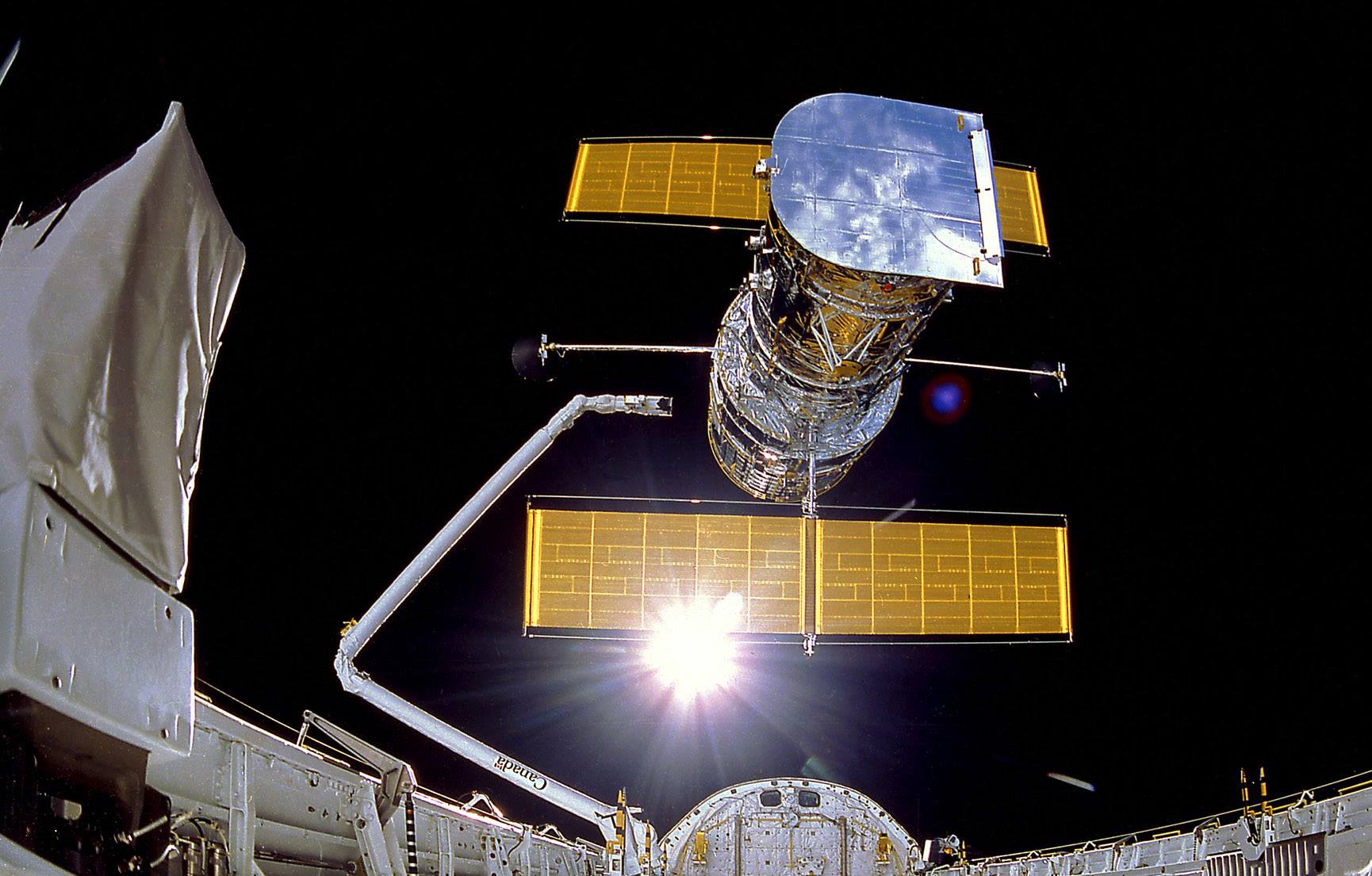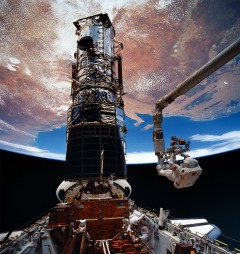
On Wednesday, April 23, Washington, D.C.’s Smithsonian National Air and Space Museum observed the 24th anniversary of NASA/ESA’s Hubble Space Telescope’s launch into orbit by unveiling “Repairing Hubble.” This new exhibit displays two vital instruments that were once part of the space telescope. Since its inception in 1990, Hubble has uncovered—and continues to uncover—discoveries changing how researchers and scientists see astronomy. Before its string of discoveries, though, Hubble famously underwent a series of repairs that saved its cosmic “eyesight.”
Hubble’s journey into spaceflight history began on April 24, 1990, when the telescope was launched during STS-31 aboard Space Shuttle Discovery (which is now displayed at the museum’s Steven F. Udvar-Hazy Center in Chantilly, Va.). However, shortly after its deployment it was discovered that the telescope’s primary mirror contained a serious flaw that made it produce “nearsighted,” distinctly out-of-focus images.

But all was not lost. Two instruments were designed to help address the flaw. The Wide Field and Planetary Camera 2 (WFPC2) and the Corrective Optics Space Telescope Axial Replacement (COSTAR) system were designed to work together and jointly correct the abberation in Hubble’s primary mirror. By December 1993, these instruments were ready to do their work. In addition, other repairs were scheduled to lengthen the telescope’s operational life and replace failing components.
COSTAR and WFPC2 were launched on STS-61 aboard Space Shuttle Endeavour that month. Astronauts Story Musgrave, Jeffery Hoffman, Kathryn Thornton, and Thomas Akers performed a series of five spacewalks during what has been historically referred to as the “Hubble Rescue Mission.” Shortly thereafter, the telescope began returning stunning imagery back to Earth, living up to its initial promise.
Hubble was serviced four more times in orbit on STS-82 in 1997, STS-103 in 1999, STS-109 in 2002, and STS-125 in 2009. Its last servicing mission was chronicled in the 3D IMAX film Hubble 3D, which was released in 2010; it was performed by astronauts aboard Space Shuttle Atlantis. The achievements of these servicing missions—and the shuttle itself—are chronicled and displayed at the Kennedy Space Center’s Visitor Complex in Florida.
The last Hubble servicing mission saw the end of COSTAR and WFPC2’s service lives, as they were removed and replaced. The two instruments were previously shipped to NASA’s Goddard Space Flight Center in Greenbelt, Md. WFPC2 was particularly studied for showing effects from being in space, as it was dimpled and dented by micro-meteoroids and other space debris. These pockmarks from a life of service to space are visible to visitors who view the instrument at the museum.
A reception heralding the opening of the exhibit—showcased appropriately under the museum’s Hubble mockup—was held Wednesday at the museum. NASA Administrator Charlie Bolden, who piloted STS-31 in 1990, made remarks at the event. Thanks to astronauts like Bolden—and scores of ground controllers, scientists, astronomers, researchers, and other personnel—the Hubble Space Telescope’s story was transformed from one of disappointment to one of runaway success.
Want to keep up-to-date with all things space? Be sure to “Like” AmericaSpace on Facebook and follow us on Twitter: @AmericaSpace



